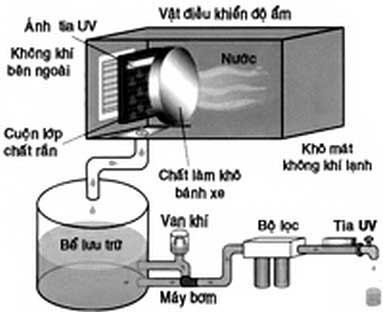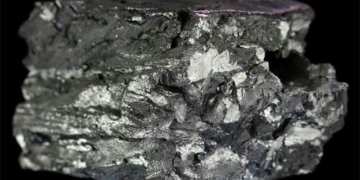The machine extracts moisture from the outside air and converts it into water. For every 1 kW of electricity, it produces 4 liters of water.
The water generated by this machine tastes sweeter than tap water or spring water. These water samples have been tested at the Pasteur Institute in Ho Chi Minh City and the Center for Experimental Analysis Services, and all results meet health standards.
For every 1 kW of electricity, the machine produces 4 liters of water. It extracts moisture from the outside air and converts it into water, while simultaneously reducing humidity and cooling the air, creating a refreshing atmosphere to be returned to the room. Thus, this machine not only generates water but also cools the air, performing both functions using a single energy source.
 |
|
Schematic Diagram of the Air Purifier that Converts Air to Water |
The working principle of the machine is as follows: The air is purified as it passes through air filters and UV sterilization within the machine, thereby cleaning it and removing dust, pollen, mold spores, bacteria, and other microscopic elements from the air.
Humidity is condensed from the external air onto a “food grade” device covered by coils, which is retained in a storage tank and continuously ozonated to ensure the water is free from germs.
When needed, the water is extracted, filtered through a carbon filter, and passed through a UV sterilization system. At this point, the water is ready to be heated or cooled for user convenience.
The filter can capture impurities as small as 5 microns, effectively removing solid particulate matter from the water. The carbon filter eliminates organic compounds and oxidants. The machine is equipped with a pressure gauge displaying the input and output pressure of the filter columns.
The design of this machine resembles that of commonly used hot and cold water dispensers but is slightly larger. It is manufactured in South Korea using American technology. Currently, there are 15 different models available in various sizes and capacities, depending on usage conditions.


















































